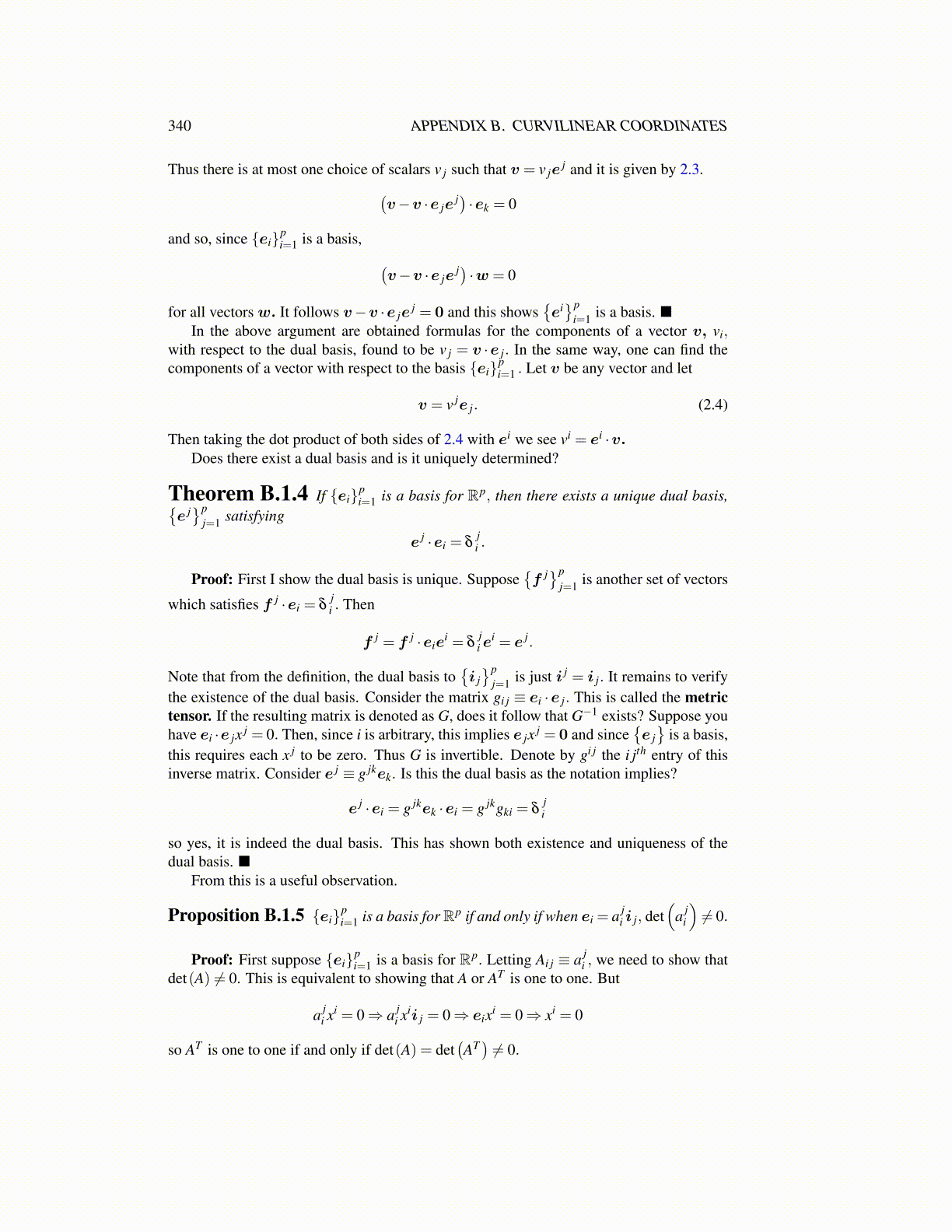
340 APPENDIX B. CURVILINEAR COORDINATES
Thus there is at most one choice of scalars v j such that v = v jej and it is given by 2.3.(
v−v ·e jej) ·ek = 0
and so, since {ei}pi=1 is a basis, (
v−v ·e jej) ·w = 0
for all vectors w. It follows v−v ·e jej = 0 and this shows
{ei}p
i=1 is a basis. ■In the above argument are obtained formulas for the components of a vector v, vi,
with respect to the dual basis, found to be v j = v ·e j. In the same way, one can find thecomponents of a vector with respect to the basis {ei}p
i=1 . Let v be any vector and let
v = v je j. (2.4)
Then taking the dot product of both sides of 2.4 with ei we see vi = ei ·v.Does there exist a dual basis and is it uniquely determined?
Theorem B.1.4 If {ei}pi=1 is a basis for Rp, then there exists a unique dual basis,{
e j}p
j=1 satisfying
e j ·ei = δji .
Proof: First I show the dual basis is unique. Suppose{f j}p
j=1 is another set of vectors
which satisfies f j ·ei = δji . Then
f j = f j ·eiei = δ
ji e
i = e j.
Note that from the definition, the dual basis to{i j}p
j=1 is just i j = i j. It remains to verifythe existence of the dual basis. Consider the matrix gi j ≡ ei ·e j. This is called the metrictensor. If the resulting matrix is denoted as G, does it follow that G−1 exists? Suppose youhave ei ·e jx j = 0. Then, since i is arbitrary, this implies e jx j = 0 and since
{e j}
is a basis,this requires each x j to be zero. Thus G is invertible. Denote by gi j the i jth entry of thisinverse matrix. Consider e j ≡ g jkek. Is this the dual basis as the notation implies?
e j ·ei = g jkek ·ei = g jkgki = δji
so yes, it is indeed the dual basis. This has shown both existence and uniqueness of thedual basis. ■
From this is a useful observation.
Proposition B.1.5 {ei}pi=1 is a basis forRp if and only if when ei = a j
i i j, det(
a ji
)̸= 0.
Proof: First suppose {ei}pi=1 is a basis for Rp. Letting Ai j ≡ a j
i , we need to show thatdet(A) ̸= 0. This is equivalent to showing that A or AT is one to one. But
a ji xi = 0⇒ a j
i xii j = 0⇒ eixi = 0⇒ xi = 0
so AT is one to one if and only if det(A) = det(AT)̸= 0.